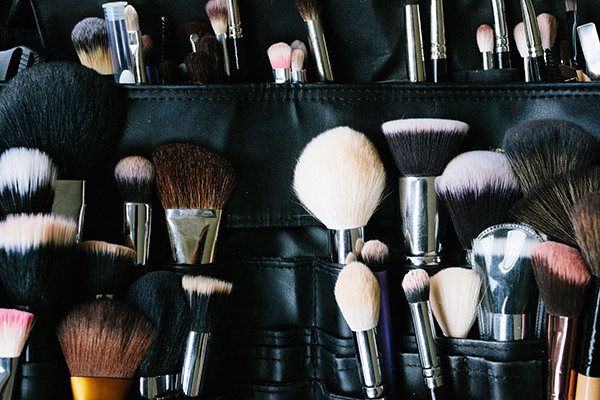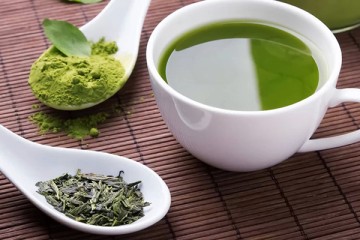How To Wash Makeup Brushes
What are makeup brushes?
Makeup brushes are tools with bristles used for applying cosmetics to the face, eyes, and lips. They come in various shapes and sizes, each designed for specific purposes. Brushing makeup brushes refers to the act of cleaning them regularly, and it is an important practice for several reasons.
So why do you need to wash makeup brushes?
Firstly, makeup brushes accumulate dirt, oil, and bacteria over time. By regularly brushing them, we remove these impurities, preventing the buildup of harmful bacteria that can cause skin issues such as breakouts or infections.
Secondly, cleaning makeup brushes helps maintain their performance. Over time, product residue can build up on the bristles, making them less effective in applying makeup evenly and smoothly. Brushing them removes the buildup, ensuring optimal performance and allowing for flawless application.
Moreover, brush cleansing is essential for preserving the lifespan of the brushes themselves. Regular maintenance prevents bristle shedding, maintains the brush's shape, and prevents deterioration, ensuring they last longer.
Lastly, brush scrubbing helps to prevent color contamination. Using the same brush for different shades without cleaning in between can lead to muddled or distorted colors. Cleaning allows for accurate color application, ensuring the true pigmentation of each product.

Gather your supplies
Start by selecting a gentle liquid soap or a specialized brush cleanser specifically formulated for cleaning makeup brushes. Look for products that are free from harsh chemicals or abrasives, as these can damage the bristles over time.
Next, prepare a clean towel that is designated for drying your brushes. The towel should be soft and absorbent, allowing you to gently blot and dry the bristles without causing any friction or damage. Avoid using fabric softeners or dryer sheets, as they can leave a residue on the brushes.
Running water is also necessary to rinse all soap or cleanser residue on the brushes. It is recommended to clean with a basin filled with water or at a sink.
Wet the bristles
Once you have gathered your supplies, it's time to begin the process of washing your makeup brushes. Wet the bristles under lukewarm running water. Hold the brush with the bristles facing downwards to prevent water from seeping into the handle, which can potentially loosen the glue that holds the bristles together.
While wetting the bristles, gently massage them with your fingers to help unbind any built-up makeup, oils, or dirt. Be careful not to apply excessive force or scrub too vigorously, as this can cause damage to the bristles and alter their shape.
It's important to use lukewarm water, as hot water can tear the bristles while cold water may not effectively remove all traces of cleanser. The temperature should be comfortable to the touch, providing a gentle and thorough rinse for the bristles.
Apply cleanser
Start by placing a small amount of liquid soap or brush cleanser into the palm of your hand or onto a clean surface. The cleanser should be specifically formulated for makeup brushes to effectively break down makeup residue, oils, and bacteria.
Take the damp brush and gently swirl it in the cleanser. You can also use a brush cleaning mat or silicone glove with texture to help work the cleanser into the bristles more effectively. This swirling motion helps to loosen and dislodge any remaining makeup or dirt that may be trapped deep within the bristles.
Cleanse the bristles
You can use your fingers or a brush-cleaning tool specifically designed for this purpose. Apply a small amount of the gentle liquid soap or brush cleanser onto your fingers or the cleaning tool.
Next, gently massage the bristles in circular motions, working the cleanser into the brush. By doing this, you help to dislodge any trapped debris and ensure a thorough cleanse.
Rinse thoroughly
Be meticulous during the rinsing process to prevent any leftover cleanser from accumulating in the bristles. Residual soap can lead to a buildup over time, which can affect the performance of the brushes and potentially cause skin irritations.
While rinsing, pay extra attention to the base of the bristles, where product and bacteria tend to accumulate. Ensure that the water reaches this area and thoroughly cleanses it.
Squeeze out excess water
Remove any excess water from the bristles before moving on to the drying stage. This step is crucial as it helps expedite the drying time and prevents potential damage to the brushes. To ensure optimal results, carefully squeeze the bristles out as much water as possible from the base to the tips, using either your fingers or a clean towel.
By taking the time to properly remove the excess water, you set the stage for a more efficient and effective drying process, ultimately prolonging the lifespan of your beloved makeup brushes.
Reshape the bristle
After rinsing the bristles, reshape them to their original form to maintain the integrity and functionality of your makeup brushes. Gently use your fingers to reshape the bristles, starting from the base and working your way toward the tips. This step is particularly crucial for brushes with dense or tightly packed bristles.

Allow drying completely
Once you have finished washing the brushes, allow them to dry completely before using them again. Proper drying is necessary to prevent the growth of bacteria and maintain the shape and integrity of the bristles.
To begin the drying process, gently squeeze out any excess water from the bristles. Be careful not to pull or twist the bristles forcefully, as this can cause damage.
Next, lay the brushes flat on a clean towel or cloth, ensuring that the bristles are spread out and not touching each other. This allows for proper air circulation and prevents the bristles from becoming misshapen. Alternatively, you can hang the brushes upside down using clips or hooks, which helps water to drain away from the ferrule and bristles.
In conclusion,
Proper maintenance of your makeup brushes through regular washing is a crucial step in maintaining their cleanliness and performance. By following the simple steps of wetting, cleansing, rinsing, and drying, you can effectively remove accumulated makeup residue, oils, and bacteria from the bristles. Regular cleaning not only promotes better makeup application but also safeguards your skin against potential breakouts and irritations.
- Related post: How to Get Rid of Stretch Marks






